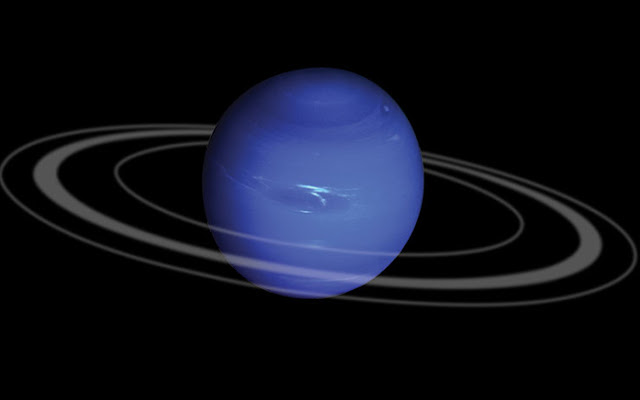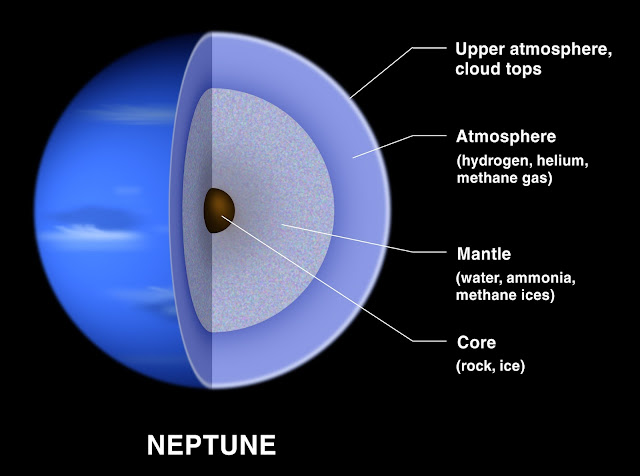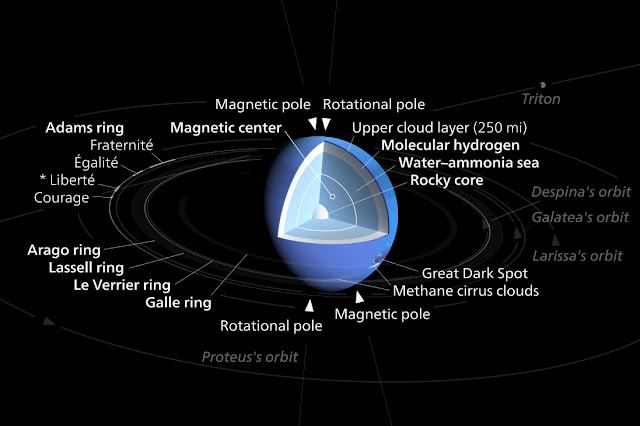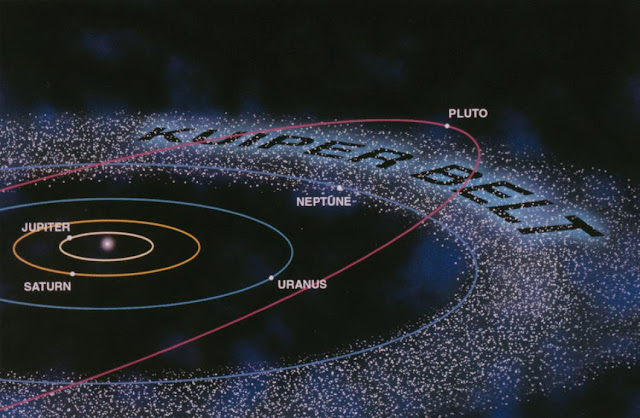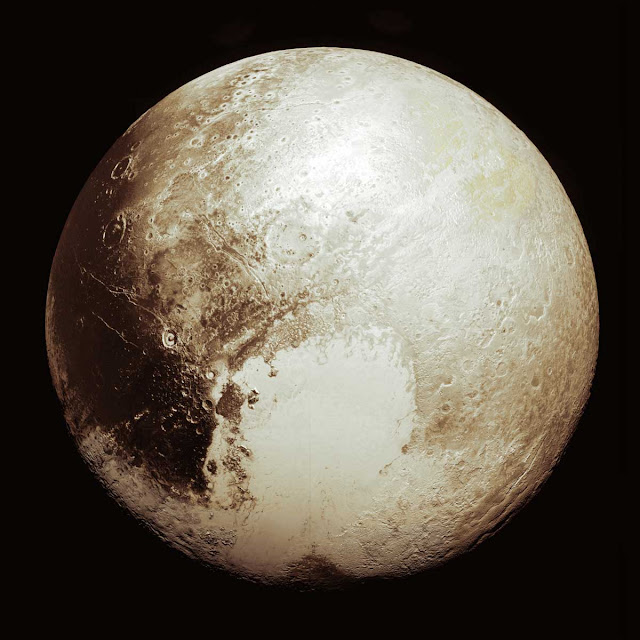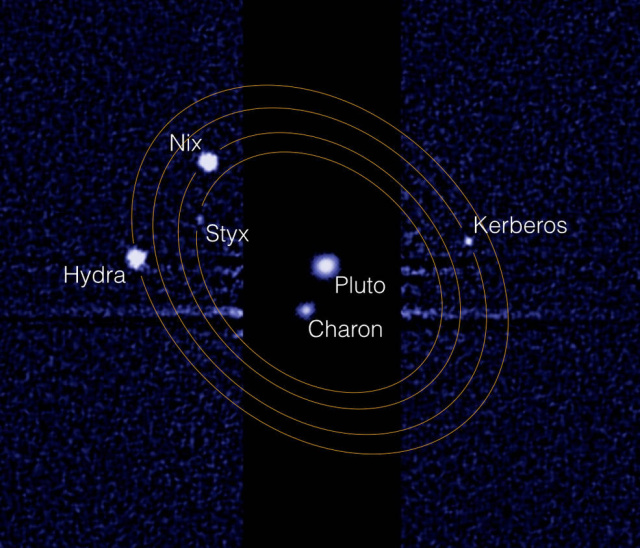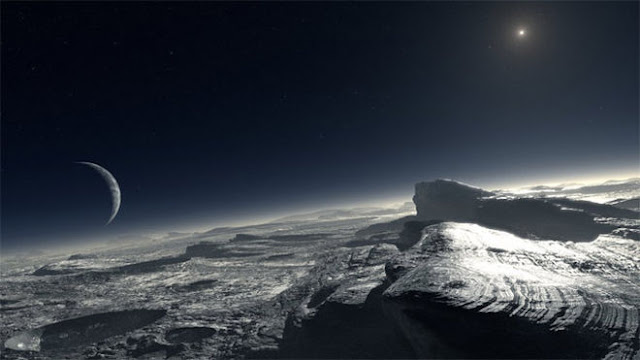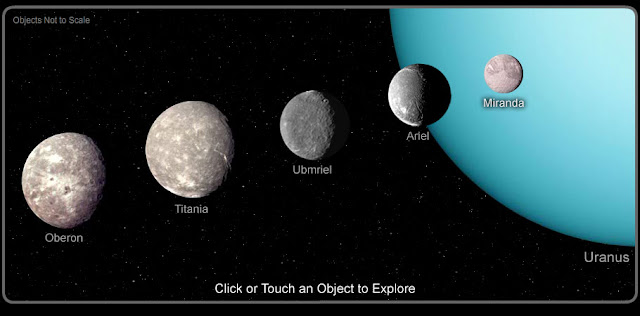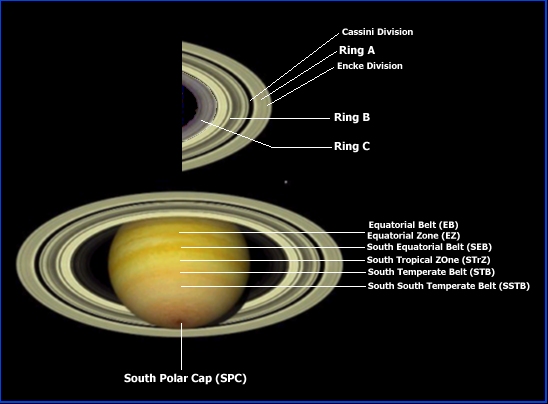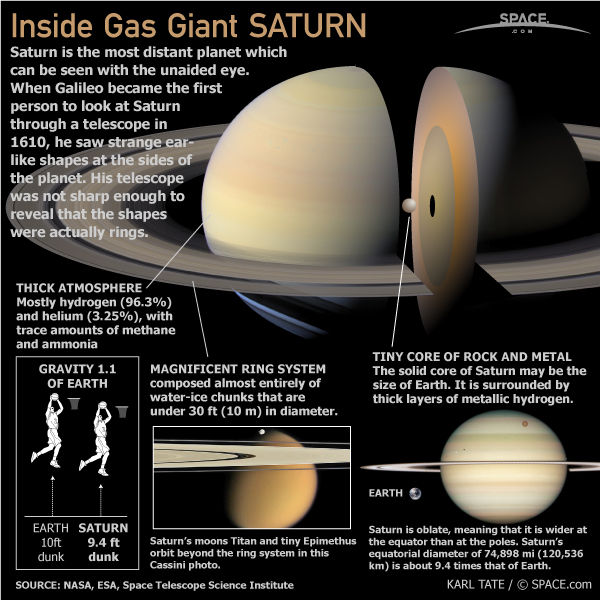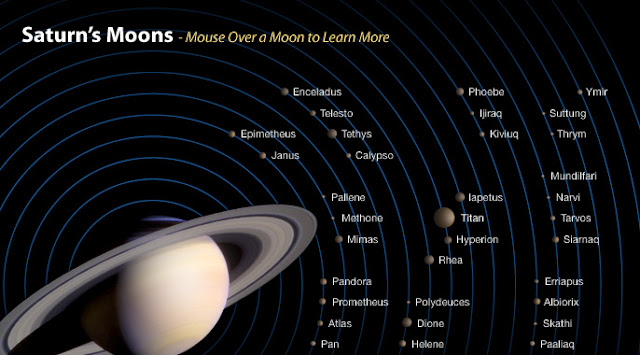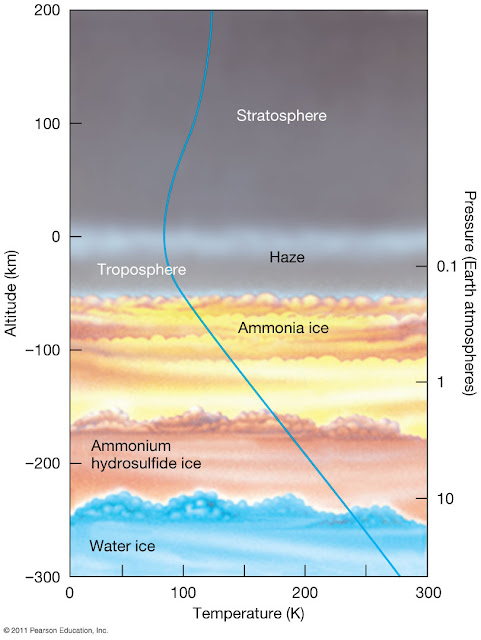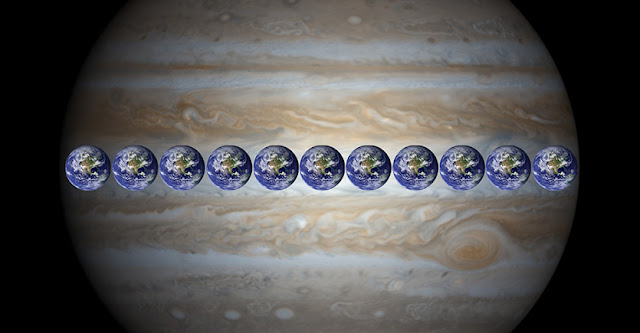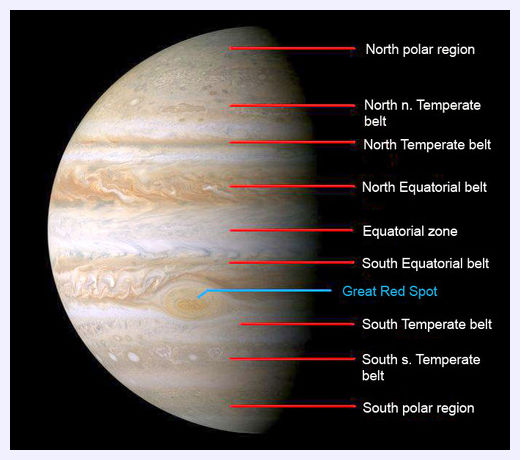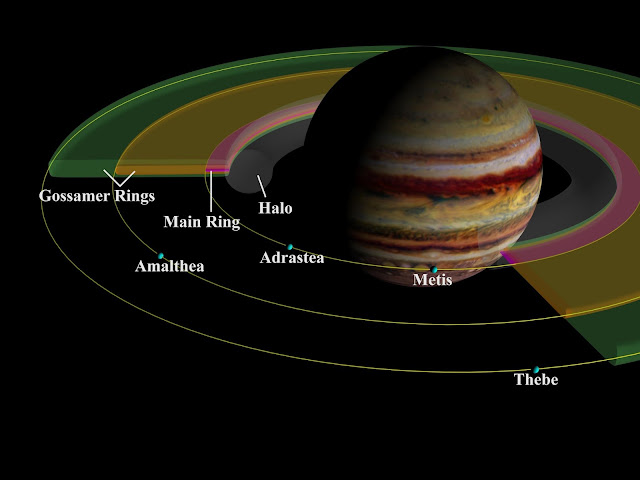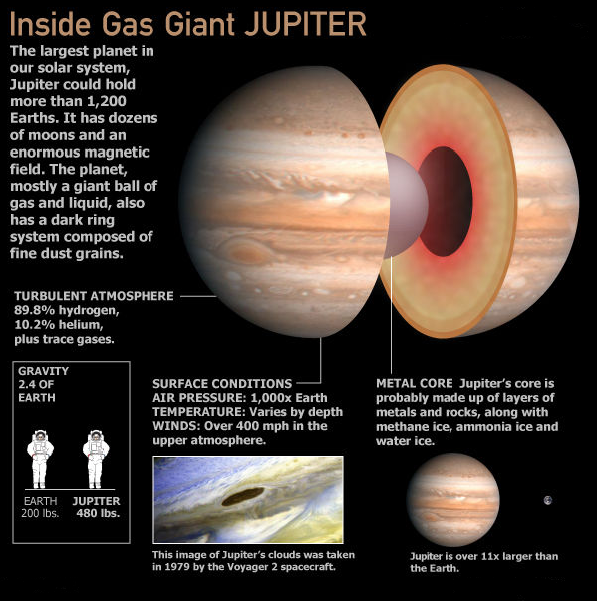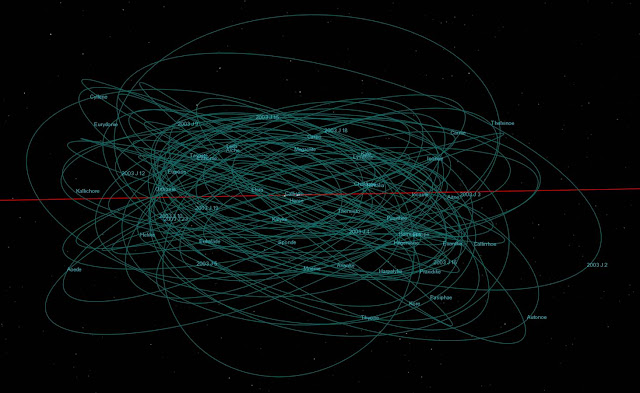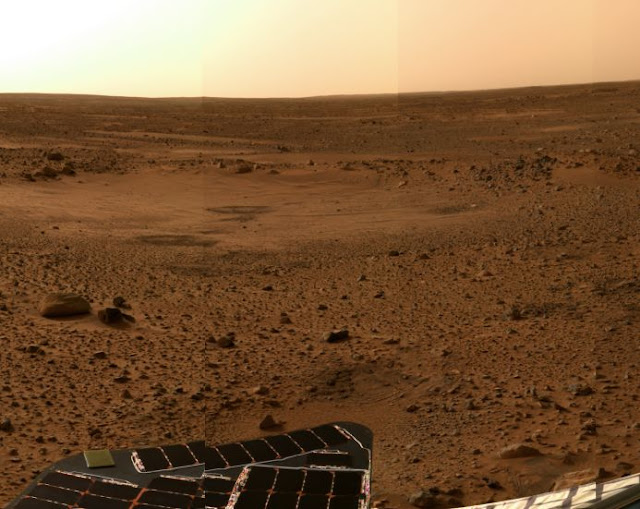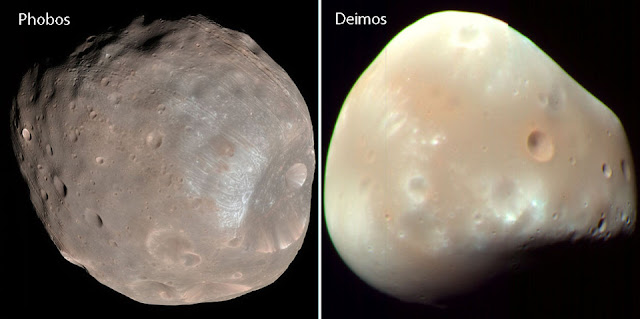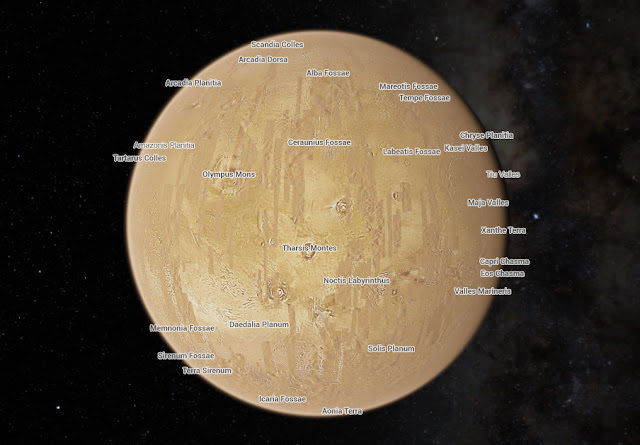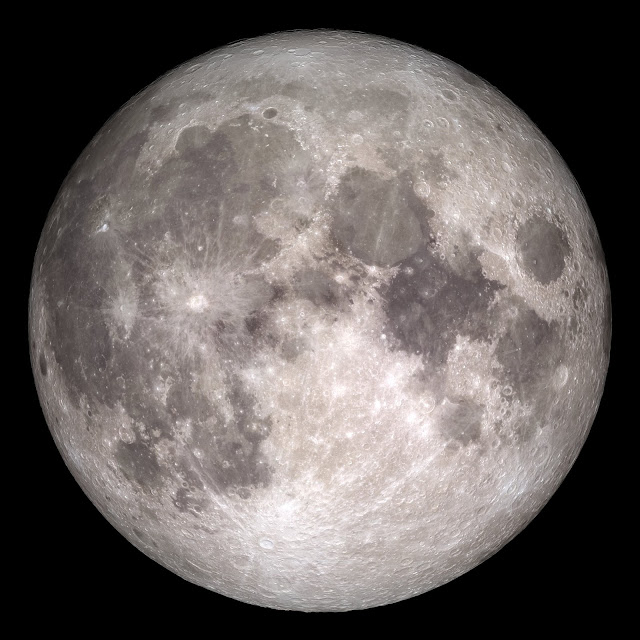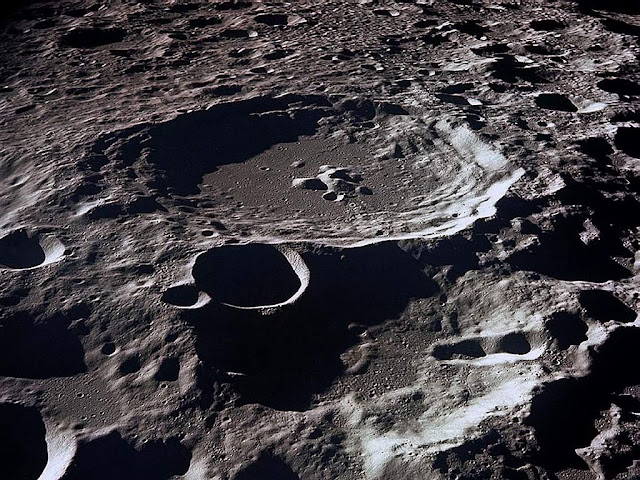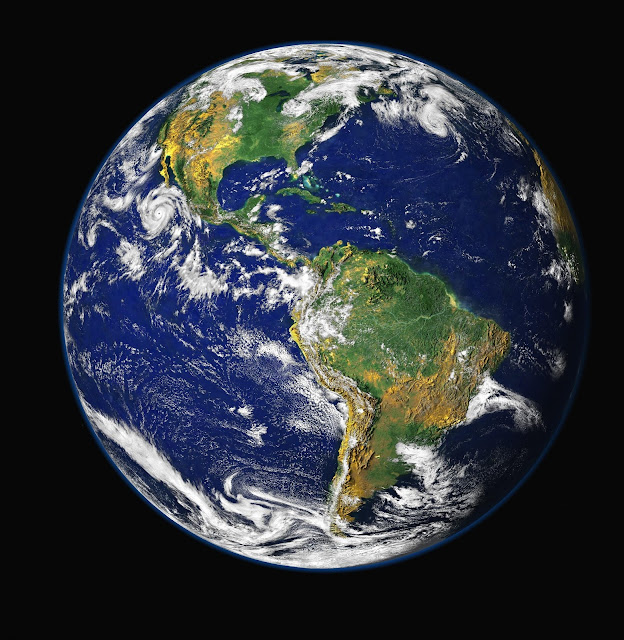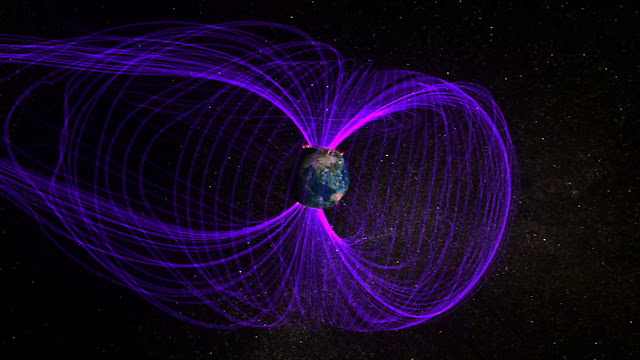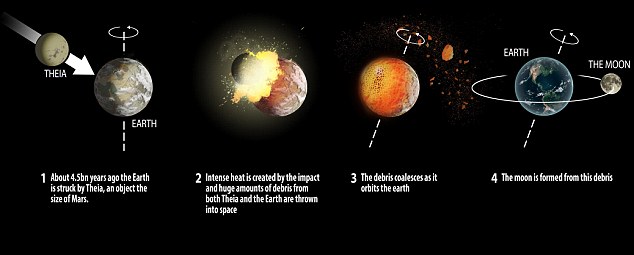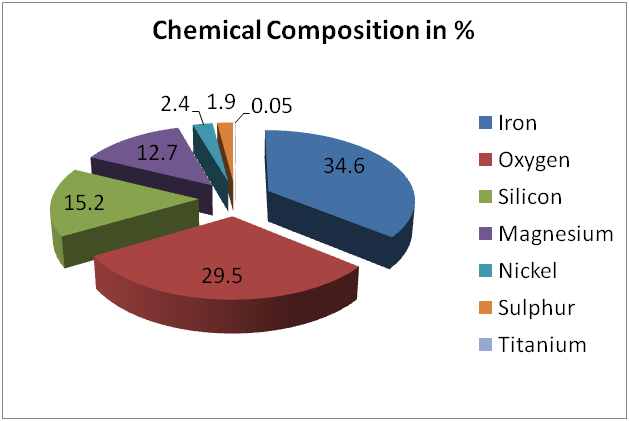VENUS IS A ROCKY PLANET and the second planet from
the Sun. Venus spins slowly backwards
 |
| Venus |
as it orbits
the Sun, causing its rotational period to be the longest in the
Solar System, at about 243 Earth days. It is slightly smaller than
the Earth and probably has similar internal structure,
consisting of a semi-solid metal core, surrounded by a rocky mantle and crust. Venus is the
Brightest object in the sky after
the Sun and Moon because its cloud reflect sunlight strongly. The main component of the atmosphere is
Carbon dioxide, which traps heat in a greenhouse effect far stronger than that on
the Earth. As a result,
Venus is the hottest planet, with a maximum surface temperature
of
about 480oC. The thick cloud layers contain droplets of
Sulphuric acid and are driven around the planet by winds
at speeds of up to 360 kilometres per hour. Although the planet takes 243
Earth days to rotate once,
the high-speed winds cause the clouds to circle the planet in only four Earth days. The high temperature, acidic clouds and enormous atmosphere pressure (about 90 times grater at the surface than that on
the Earth) make the environment extremely hostile. However,
Space probes managed to land on Venus and photograph its dry, dusty surface. The Venusian surface has also been mapped by
 |
| Venusian Suface (By a space probe) |
probes with radar equipment that can "see" through the cloud layers . Such radar maps reveal a terrain with craters, mountains, volcanoes and areas where craters have been covered by plains of
Solidified volcanic lava. There are two large highland regions called
Aphrodite Terra and Ishtar Terra.
 |
Aphrodite Terra and Ishtar Terra
(two highland regions in Venus) |
